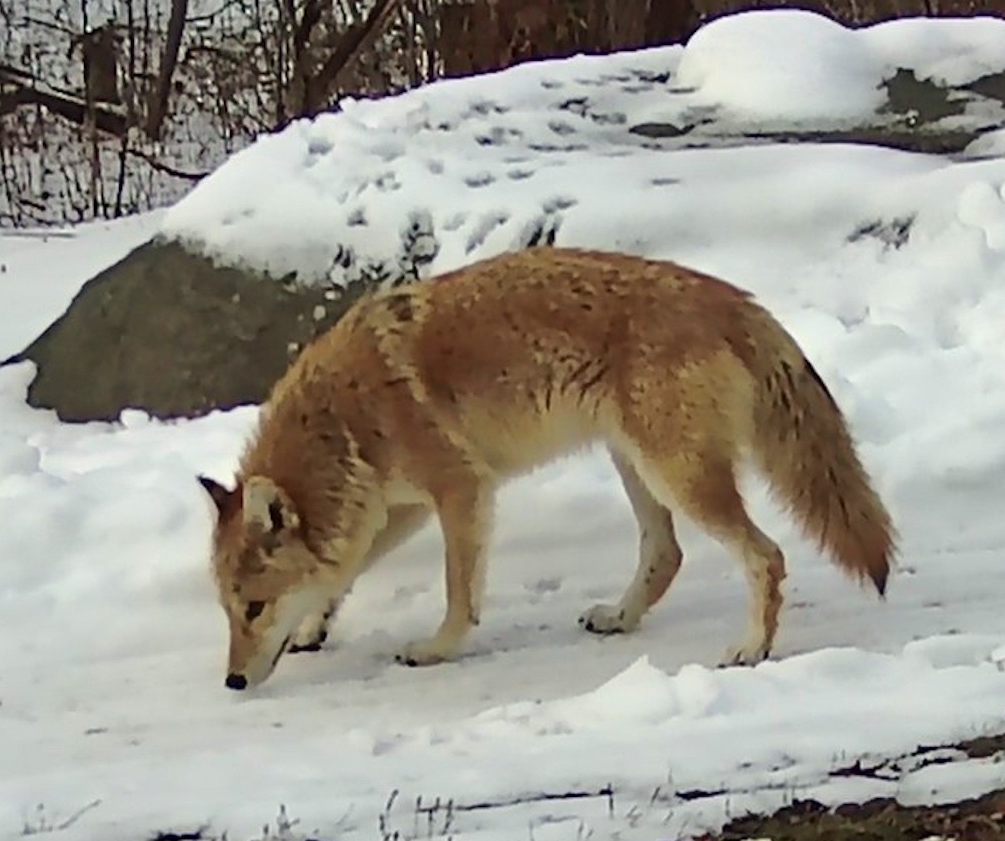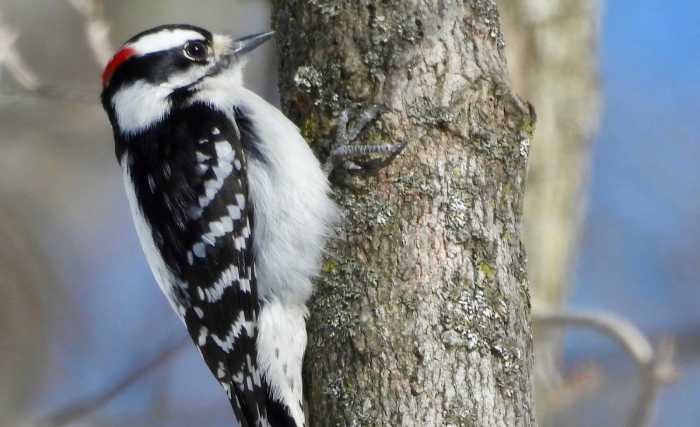By Joe Cook
Coyotes on Long Island… Yes, those murmurs and rumors are indeed true. For years now, it has seemed like you’ve heard a bigfoot-like story from a friend of a friend, that spotted a coyote on Long Island. Well, it has been officially documented over the last couple of years and is now confirmed. However, the new apex predator on the Island isn’t really all that new.
According to the Long Island Coyote Study Group (LICSG), coyotes have been here just shy of a decade. It started with their appearance in the Bronx back in 1995, and since have found their way out to the North Fork. The LICSG has reported that the first coyote resident sighting on Long Island was in 2009, and it’s believed he lived for 12 to 13 years. Four years later in 2013, the first reported sightings on the east end of Long Island came through. Now, fast forward to 2024 and we have confirmed families of coyotes on the South Shore.
In 2020, spearheaded by the Seatuck Environmental Association, the LICSG banded together. This group aims to document, monitor, and educate people on their newest four-legged neighbor. People, especially pet owners, might be opposed to allowing these new residents to stick around. That’s why on April 27 this group hosted a talk at Fire Island National Seashore’s Watch Hill ferry terminal in Patchogue, to have a frank talk about coyotes.
The first thing that might come to your mind when finding out you share residency with a coyote, is they pose a danger to you.
“Coyotes are naturally wary of people,” said Dr. Lisa Filippi, one of the members of the LICSG. Dr. Filippi is currently monitoring a family of coyotes on Long Island and said, “When I go to this area for research samples, I know the coyotes are there, however, they are hiding from me, I’ve only barely caught a glimpse of them in person twice.”
Coyotes are very clever and will avoid humans. The group is urging the public with the increasing population, to never feed or approach them, because they can learn to not be fearful of humans, and according to Dr. Filippi, “that’s not safe for the coyotes, or humans.”
If you’re still fearful, Frank Vincenti, founder of the Wild Dog Foundation, had this to say about it, “You have more of a chance of getting into a fight with Tom Cruise and Brad Pitt, and getting struck by lightning, than getting into an aggressive altercation with a coyote.”
While you should always be keeping an eye on your pets, it would beneficial to make sure you do keep an eye on your dogs, especially smaller ones, and cats with the
coyotes around. However, there has been no recorded predation on feral cats.
“The area where we’ve been monitoring the coyote family has a high population of feral cats, the coyotes haven’t attacked them,” Dr. Filippi explained. Humans pose a larger threat to them than they do to us. Two coyotes have been lost to roadkill this year already, the group said.
How did these coyotes get here? Well, according to Frank Vincenti, they use train tracks and power lines to travel.
“Long Island is one of the last land masses they’ve found themselves in,” Vincenti exclaimed.
The proper term for them is Eastern Coyotes. They differ from the coyotes out west and are somewhat new, as they have been recorded since the 1930’s. They are a hybrid crossing of Western coyotes, wolves, and a smaller percentage of dogs. (The LICSG estimates they are 60-84% coyote, 8-25% wolf, and 8-11% dog.) This is a direct result of Western coyotes moving east and breeding with wolves and dogs along the way, thus resulting in the Eastern coyote.
They average 35-45 pounds. They have pointy ears, bushy tails, and are approximately 20 inches tall. They can be brown, black, gray, and even blond according to the group’s description of them.

These gorgeous creatures are the first naturally established predator on Long Island. Long before we enjoyed the beaches and called Long Island home, smaller Eastern wolves, black bears, and cougars, were the top dogs of the ecosystem. However, they were quickly pushed out when the pioneers arrived. Since then, Long Island has only had what Vincenti calls, “meso-predators.” This group consisted of small-time predators like Eagles, Racoons, Red Foxes, and Bobcats.
This is in direct correlation with the massive amounts of raccoons, geese, and white tail deer population on Long Island. It has been a topic of discussion for years now; that their populations are too high because there is no predator to them. The populations continue to increase and Seatuck has even opened the doors of their wildlife refuges to archery deer hunters the last few years in an effort to help prevent the deer from over-grazing and control the population.
The biggest driving point of the LICSG is all of the positive effects these coyotes inhabiting Long Island will have. They will be important to the ecosystem.
“An ecosystem with predators is a healthy one,” said Arielle Santos of Seatuck.
Predators help maintain the dynamics and health of ecosystems, and the group was adamant about how much help these coyotes will be to Long Islands. They will help keep the deer, rodent, raccoon, and geese populations down.
“They will remove weak and sick animals from the gene pool, helping to keep other populations healthy,” Dr. Filippi explained.
The family that Dr. Filippi has been monitoring has already begun integrating itself into the raccoon population, as that has been their main food source. Vincenti also added that they will help balance out the growing wild turkey population, which has grown enough to allow spring turkey hunting season to return to Long Island.
If you have heard the rumors about Coyotes on Fire Island, the group confirmed these rumors are true.
Coyotes are here and startng to expand. Perhaps it’s mother nature’s answer to address the overpopulation of animals. Regardless, the Long Island Coyote Study Group is driven to keep documenting and monitoring them as well as educating Long Islanders, for the best interest of both species.


























